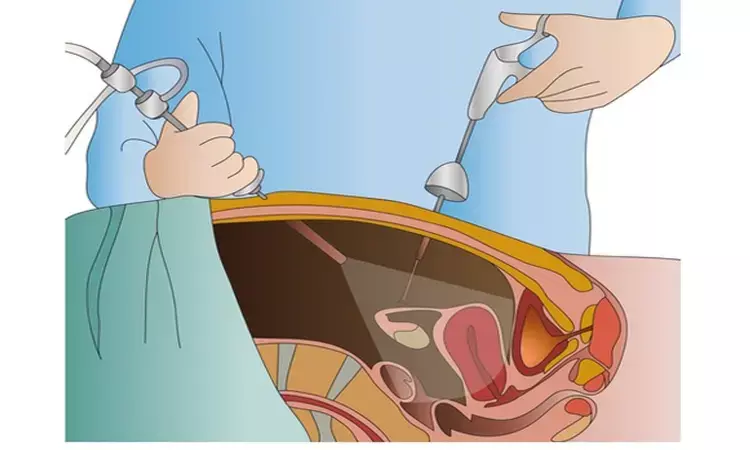- Home
- Medical news & Guidelines
- Anesthesiology
- Cardiology and CTVS
- Critical Care
- Dentistry
- Dermatology
- Diabetes and Endocrinology
- ENT
- Gastroenterology
- Medicine
- Nephrology
- Neurology
- Obstretics-Gynaecology
- Oncology
- Ophthalmology
- Orthopaedics
- Pediatrics-Neonatology
- Psychiatry
- Pulmonology
- Radiology
- Surgery
- Urology
- Laboratory Medicine
- Diet
- Nursing
- Paramedical
- Physiotherapy
- Health news
- Fact Check
- Bone Health Fact Check
- Brain Health Fact Check
- Cancer Related Fact Check
- Child Care Fact Check
- Dental and oral health fact check
- Diabetes and metabolic health fact check
- Diet and Nutrition Fact Check
- Eye and ENT Care Fact Check
- Fitness fact check
- Gut health fact check
- Heart health fact check
- Kidney health fact check
- Medical education fact check
- Men's health fact check
- Respiratory fact check
- Skin and hair care fact check
- Vaccine and Immunization fact check
- Women's health fact check
- AYUSH
- State News
- Andaman and Nicobar Islands
- Andhra Pradesh
- Arunachal Pradesh
- Assam
- Bihar
- Chandigarh
- Chattisgarh
- Dadra and Nagar Haveli
- Daman and Diu
- Delhi
- Goa
- Gujarat
- Haryana
- Himachal Pradesh
- Jammu & Kashmir
- Jharkhand
- Karnataka
- Kerala
- Ladakh
- Lakshadweep
- Madhya Pradesh
- Maharashtra
- Manipur
- Meghalaya
- Mizoram
- Nagaland
- Odisha
- Puducherry
- Punjab
- Rajasthan
- Sikkim
- Tamil Nadu
- Telangana
- Tripura
- Uttar Pradesh
- Uttrakhand
- West Bengal
- Medical Education
- Industry
Orchiopexy improves testicular temperature in children with cryptorchidism: Study

Japan: Orchiopexy is effective in improving high testis temperature caused by cryptorchidism, according to a recent study in the Journal of Urology. Also, the study found transinguinal approach to be more effective in reducing the temperature in laparoscopic Fowler–Stephens orchiopexy than an approach that created a new pathway for testicular descent medial to the inferior epigastric vessels.
Low testicular temperature is needed to maintain optimal function of germ cells; however, there is limited information regarding testicular temperature in infants and the effect of cryptorchidism and its correction, including laparoscopic staged Fowler-Stephens orchiopexy (LSFSO). To fill the knowledge gap, Koji Shiraishi, Yamaguchi University School of Medicine, Ube, Yamaguchi, Japan, and colleagues assessed the impact of orchiopexy on testicular temperature before and 12 months after surgery.
The researchers included 24 of 82 children with cryptorchidism undergoing laparoscopic Fowler–Stephens orchiopexy. They performed ultrasonographic determination of testicular volume and measurement of testicular temperature but not scrotal surface temperature using a Coretemp CTM204 before and 12 months after orchiopexy. The effects of the route of testicular delivery, conventionally through a new hiatus medial to the inferior epigastric vessels or through the transinguinal approach, were investigated in the LSFSO cases.
Key findings of the study include:
· Undescended testicular volume was significantly increased after orchiopexy (0.80 ml to 0.92 ml).
· The preoperative testicular temperature (35.1C) was significantly higher than that of the control (34.4C), and significant decreases in testicular temperature occurred after orchiopexy (34.3C).
· A multivariate analysis showed that a decrease in testicular temperature was a factor associated with postoperative testicular development.
· Twelve months after LSFSO, transinguinal approach was shown to be more effective in decreasing the testicular temperature than the conventional approach (34.4 and 35.3C, respectively).
"Our findings showed that olrchiopexy is effective in correcting the high-temperature environment caused by cryptorchidism," wrote the authors. "In the case of nonpalpable testes treated by LSFSO, transinguinal fixation is more effective than the conventional approach in reducing testicular temperature, but a longer follow-up period is necessary to draw a final conclusion."
Reference:
The study titled, "Testicular Temperature and the Effects of Orchiopexy in Infants With Cryptorchidism," is published in the Journal of Urology.
DOI: https://www.auajournals.org/doi/10.1097/JU.0000000000001896
Dr Kamal Kant Kohli-MBBS, DTCD- a chest specialist with more than 30 years of practice and a flair for writing clinical articles, Dr Kamal Kant Kohli joined Medical Dialogues as a Chief Editor of Medical News. Besides writing articles, as an editor, he proofreads and verifies all the medical content published on Medical Dialogues including those coming from journals, studies,medical conferences,guidelines etc. Email: drkohli@medicaldialogues.in. Contact no. 011-43720751


